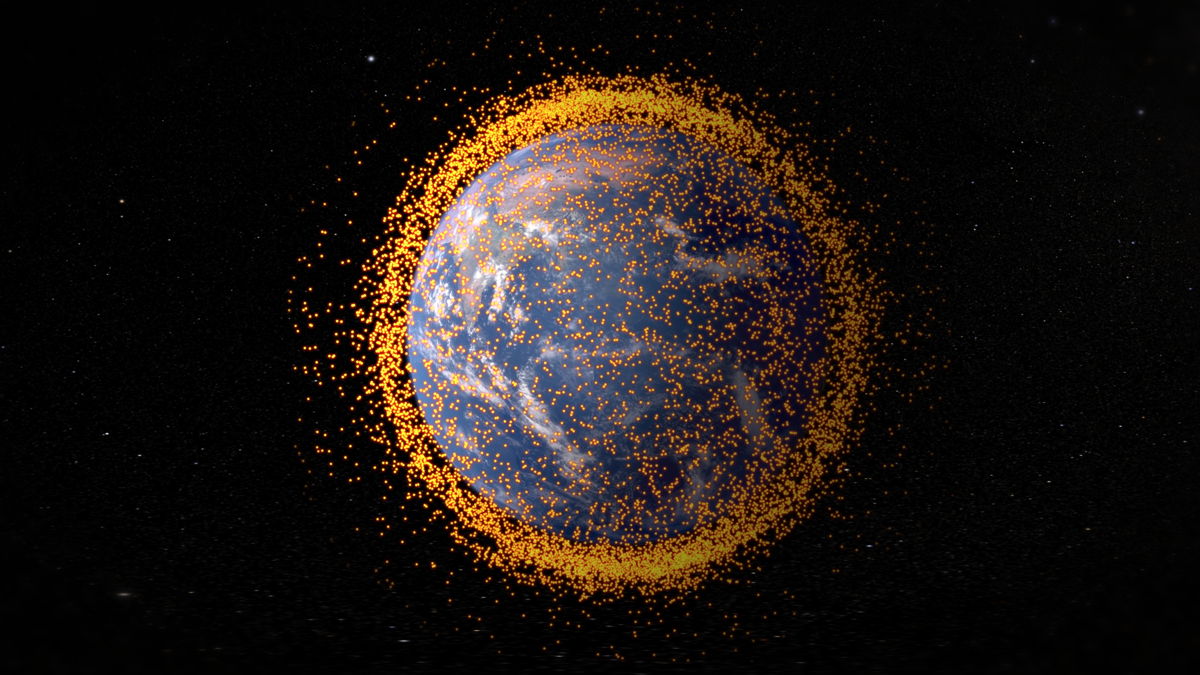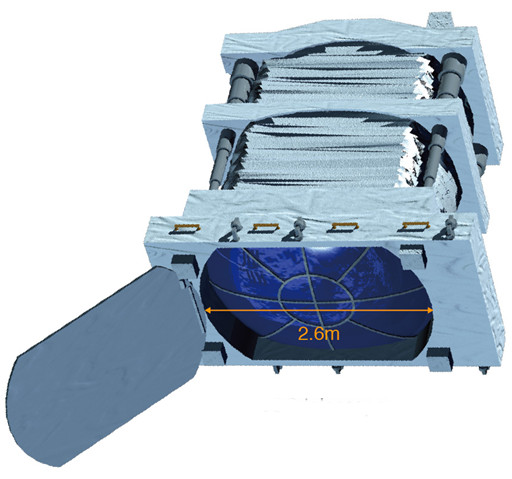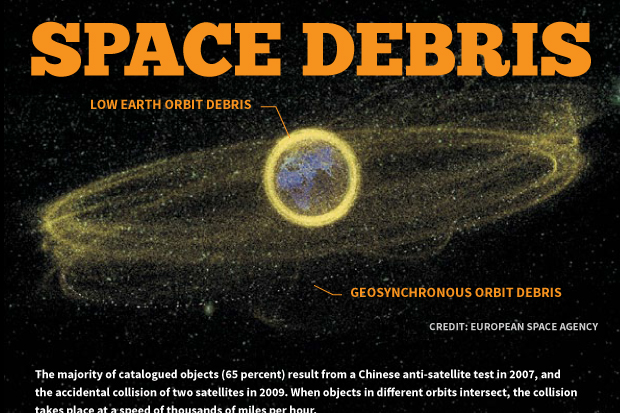Space Station Could Get Laser Cannon to Destroy Orbital Debris

The International Space Station could one day get armed with a laser to shoot down orbiting debris, researchers say.
This concept could eventually lead to a laser-firing satellite that could get rid of a large percentage of the most troublesome space junk orbiting Earth, scientists added.
NASA researchers suggest that nearly 3,000 tons of space debris reside in low-Earth orbit, including derelict satellites, rocket bodies and parts and tiny bits of wreckage produced by collisions involving larger objects. Impacts from pieces of junk that are only the size of screws can still inflict catastrophic damage on satellites, since these projectiles can travel at speeds on the order of 22,370 mph (36,000 km/h). [7 Wild Ideas to Clean Up Space Junk]
The problem of space debris is growing as more satellites and spacecraft get sent into space. Moreover, large pieces of junk can generate lots of small fragments if they get hit, and those fragments can then go on to strike other objects in orbit for a chain reaction of destruction.
Most spacecraft, including the International Space Station, can withstand impacts from debris smaller than about 0.4 inches (1 centimeter) with adequate shielding. However, ground-based radar and computer models suggest that more than 700,000 pieces of debris larger than 0.4 inches now orbit Earth. Although items larger than 4 inches (10 cm) are big enough for astronomers to spot, debris between 0.4 and 4 inches (1 to 10 cm) in size is significantly more difficult to identify and dodge.


Now researchers suggest the Extreme Universe Space Observatory (EUSO), scheduled to be installed on Japan's module on the space station in 2017, could help the orbiting complex detect dangerous debris. They add that a powerful laser under development could then help shoot down this space garbage.
"The EUSO telescope, which was originally designed to detect cosmic rays, could also be put to use for this useful project," study lead author Toshikazu Ebisuzaki, an astrophysicist and chief scientist at the RIKEN (Rikagaku Kenkyūsho) Computational Astrophysics Laboratory in Wako, Japan, told Space.com.
Get the Space.com Newsletter
Breaking space news, the latest updates on rocket launches, skywatching events and more!
EUSO was originally developed to detect ultraviolet light produced by ultrahigh-energy cosmic raysas they enter the atmosphere at night. The scientists reasoned that its wide range of view and powerful optics could also help it detect high-speed debris near the International Space Station.
Once EUSO detects incoming space junk, the researchers suggest, a Coherent Amplification Network (CAN) laser can then blast the debris. The CAN laser consists of many small lasers working together to generate a single powerful beam. This device is currently under development to drive particles at high speeds in atom smashers.
The scientists would use the laser to vaporize a thin film of matter off the surface of debris. The resulting high-speed plasma would act like a rocket plume, nudging the junk downward, and away from the space station to eventually burn up in Earth's atmosphere.
A full-scale version of their system would be armed with a 100,000-watt ultraviolet CAN laser that can fire 10,000 pulses per second, each lasting one-tenth of one-billionth of a second. The researchers say this system could blast debris from a range of about 60 miles (100 kilometers), and the laser would need about 17 lbs. (8 kilograms) of lithium-ion batteries. [Worst Space Debris Events of All Time]
The scientists plan to deploy a small proof-of-concept version of their system at the International Space Station. This would consist of a miniature version of EUSO and a prototype 10-watt ultraviolet CAN laser firing 100 pulses per second. A RIKEN spokesman noted that the mini-EUSO telescope has been accepted as a project on the International Space Station and could perhaps go up in 2017 or 2018, but the laser system is still a concept that has not been built.
If the proof-of-concept and full-scale versions of this system are successful, the researchers suggest developing a satellite devoted solely to blasting space debris. They suggest the satellite should assume an orbit that takes it over both of Earth's poles, allowing it to shoot down debris all over the planet, and be armed with a 500,000-watt ultraviolet CAN laser that can fire 50,000 pulses per second. They estimate it could blast one piece of debris every five minutes, or 100,000 pieces of space junk each year.
Most space debris is concentrated at an altitude of nearly 500 miles (800 km). The researchers suggest that a satellite dedicated to blasting debris could start from an orbit of 620 miles (1,000 km) and gradually spiral downward at a rate of 6 miles (10 km) per month. After 50 months, it would have removed most of the most troublesome debris orbiting between 310 and 620 miles (500 and 1,000 km).
"We may finally have a way to stop the headache of rapidly growing space debris that endangers space activities," Ebisuzaki said in a statement.
"The biggest obstacle is funding," Ebisuzaki added. "There are some technical challenges, of course, but the main issue is getting funding for development and launch."
The scientists detailed their findings online March 13 in the journal Acta Astronautica.
Follow us @Spacedotcom, Facebook or Google+. Originally published on Space.com.
Join our Space Forums to keep talking space on the latest missions, night sky and more! And if you have a news tip, correction or comment, let us know at: community@space.com.

Charles Q. Choi is a contributing writer for Space.com and Live Science. He covers all things human origins and astronomy as well as physics, animals and general science topics. Charles has a Master of Arts degree from the University of Missouri-Columbia, School of Journalism and a Bachelor of Arts degree from the University of South Florida. Charles has visited every continent on Earth, drinking rancid yak butter tea in Lhasa, snorkeling with sea lions in the Galapagos and even climbing an iceberg in Antarctica. Visit him at http://www.sciwriter.us









